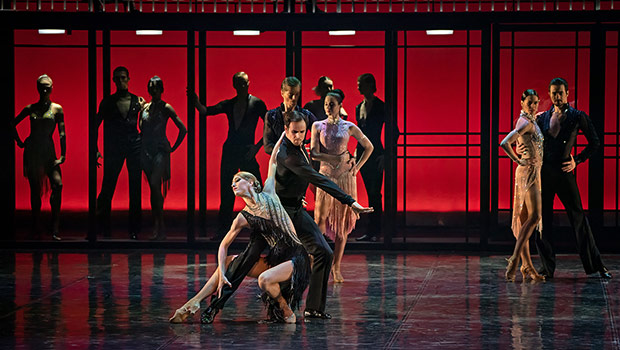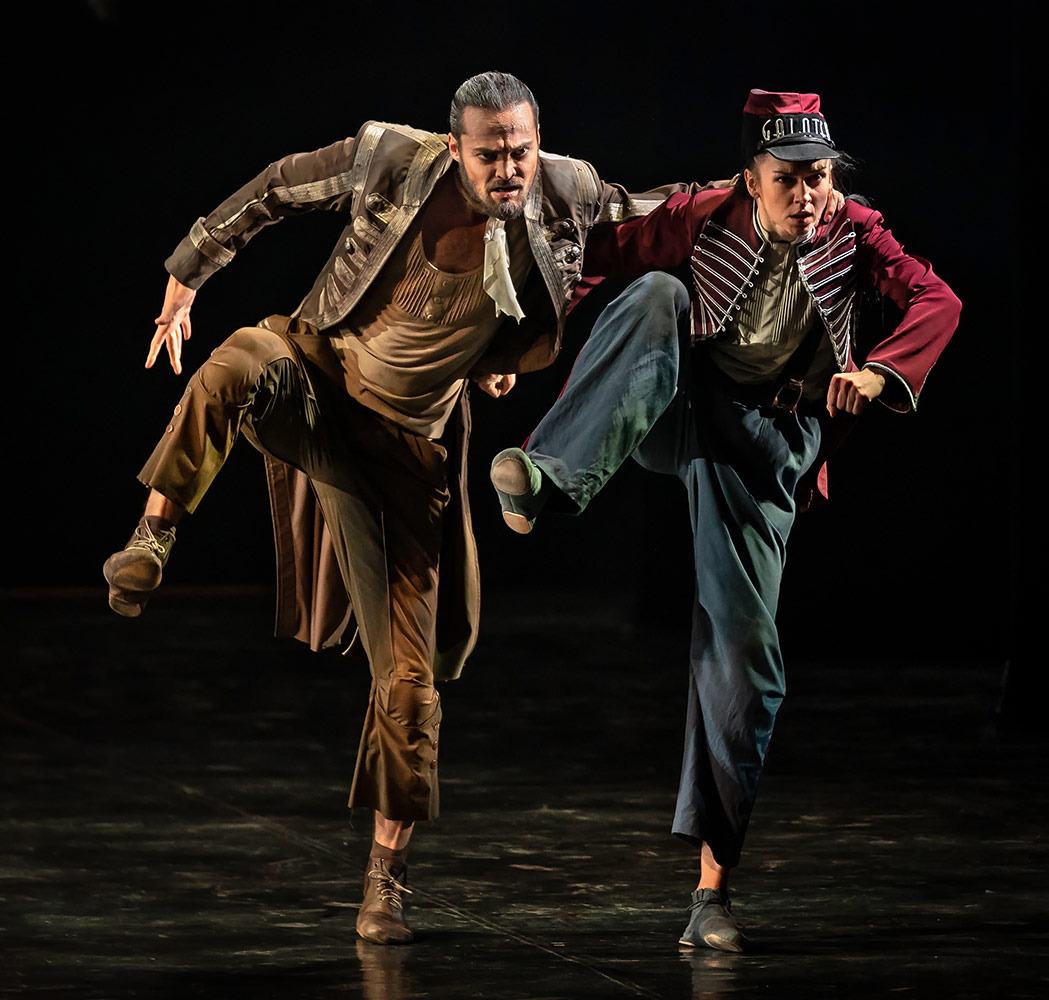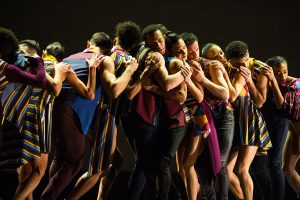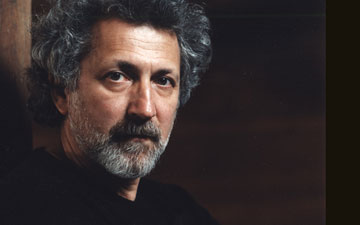
© Michael Khoury. (Click image for larger version)
Eifman Ballet
The Pygmalion Effect
★★★★✰
Berkeley, Zellerbach Hall
31 May 2019
eifmanballet.ru
calperformances.org
Be it the Greek myth, Shaw’s 1913 play or another adaptation, the Pygmalion story unsettles me. Its themes of transformation and drive are laudable as are some of the parable moments near the end. At the same time, I can’t ignore the highly problematic gender dynamics, hierarchical relationships and assumptions about wealth and class. Even the Pygmalion Effect – the correlation linking external expectations with achievement outcomes – is laden with complexity. Sure, positive reinforcement and encouragement are good things, but what about issues of control and agency?
St. Petersburg-based Eifman Ballet looks to this provocative source material in The Pygmalion Effect, choreographed by Boris Eifman and currently touring the US. On Friday evening, the full-length work landed at Cal Performances, and as the lights went down, I wondered what this dance version might bring to the table. Over the next two hours, an impressive production emerged. Yes, the narrative still had its inherent challenges, but the choreography, performances and design all riveted with drama, intensity and humor.

© Michael Khoury. (Click image for larger version)
Pygmalion Effect covered all the classic plot points: a sassy young woman, Gala and her father, Holmes, are down on their luck; Leon, the male savior character vows to shape her into someone new; and after the transformation, Gala faces an internal dilemma as she tries to reconcile her two realities. But Eifman’s container for the story was anything but typical, instead placing the action in the stately, elegant and cutthroat world of ballroom dance. In Pygmalion Effect, Leon (Oleg Gabyshev) is a professional ballroom dancer who, after a bizarre and unnerving money exchange with Holmes (Dmitry Fisher), pledges to train a headstrong Gala (Lyubov Andreyeva) for a life/career in that intoxicating sphere. A place very different from what she has experienced thus far, one of glitz and glamour, where sparkling sequins, feathers and fringe reign supreme and Art Deco refinements grace each room (incredible costumes and sets by Olga Shaishmelashvili and Zinovy Margolin, respectively).
By far, Pygmalion Effect’s top honors go to its dynamic range of characters and their choreographic vocabulary. Of course the principals, but also the zany crew of tourists, maids, ballroom dancers and street marauders that weave in and out of the space. In each instance, their movement was so fitting, not at all derivative, and the interpretations, impeccable. Grounded, weighty syntax peppered the phrases for the marauders, or 21st-century ragamuffins – flexed feet, bent extensions and flat-footed jumps suggesting a bawdy uncouthness. In contrast, the ballroom scenes oozed precision, allure and grace. From dynamic lifts to split high kicks to extreme layouts, every movement had such charged clarity and athletic flourish. And Eifman astutely wove elements of each extreme through Pygmalion Effect’s main arc, Gala’s journey. Her solos in Act I definitely displayed the former quality, albeit with more humor than the chorus. Then in Act II, her physicality indeed shifted, to more pointed feet, elongated posture and a lighter épaulement. With pure artistry and technical fortitude, Andreyeva navigated this multi-faceted character with such nuance. From one instant to the next, she kept Gabyshev’s Leon and the viewer in a delicious state of uncertainty – was she on board or not, was she feigning change, was she the one really in charge – only she knew the truth.

© Michael Khoury. (Click image for larger version)
To score the Pygmalion Effect, Eifman went with a multitude of short musical selections, composed by various members of the Strauss family (along with one Mozart concerto). With forward motion and uplifting dynamics, the set of waltzy, splendid melodies worked quite well. That is, with one exception. The majority of the musical compositions ended in a ‘ta-da’ style cadence, which was mirrored on stage by either a flashy vignette or frozen posture. What resulted were (very) frequent internal applause breaks, which compromised the overall flow of the piece. Also, there were a couple of moments of purposeful absurdity where Pygmalion Effect seemed to vacation in Dance Theater expressionism. A totally valid artistic/creative approach, though when it only happens once or twice (here, a hoverboarding angel and a sedating remote control helmet), it feels out of place.
Having said that, considering Pygmalion Effect’s theatricality, movement, design and superb dancing, these two structural issues were minor. Even though the narrative is tough for me, and I think it would be interesting to see the gender roles reversed, this performance was thoroughly enjoyable, and I was all in.

















Heather writes an excellent appraisal and evidences a wonderfully acute eye. Had I not seen several of Eiffman’s earlier works, this oeuvre probably would be about the best he has created. She is to be congratulated for their astute observations.
I was amazed that the Zellerbach audience did not applaud wildly after the performance. They applaud for almost nothing and I thought this was an extraordinary program.
Excellent review of this most innovative company! Boris Eifman is without a doubt the finest choreographer of our times, and his dancers display the finest technical and artistic abilities in the dance world today. As to the criticism that gender issues were not addressed, just physically speaking, would it even be possible for the photo displayed with this critique to become role reversed?
“…would it even be possible for the photo displayed with this critique to become role reversed?”
Er, possibly not – which is why you need choreography created with that notion in mind. For an example see this video of a work created by San Francisco Ballet’s Myles Thatcher for Scottish Ballet: https://www.scottishballet.co.uk/tv/frontiers
Re: Scottish Ballet – This is interesting but certainly not innovative. Netherlands Dans Theater was doing this kind of work in the 1960s.
Who said anything about it being innovative choreography? What I would say is that it’s an example of ‘different’ partnering and also using video and location differently. It will resonate with some and not with others – rather like Eifman’s work, I fancy!